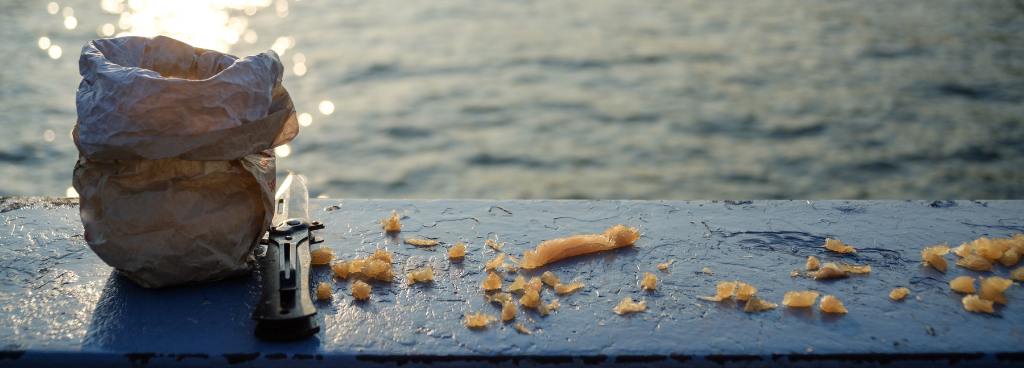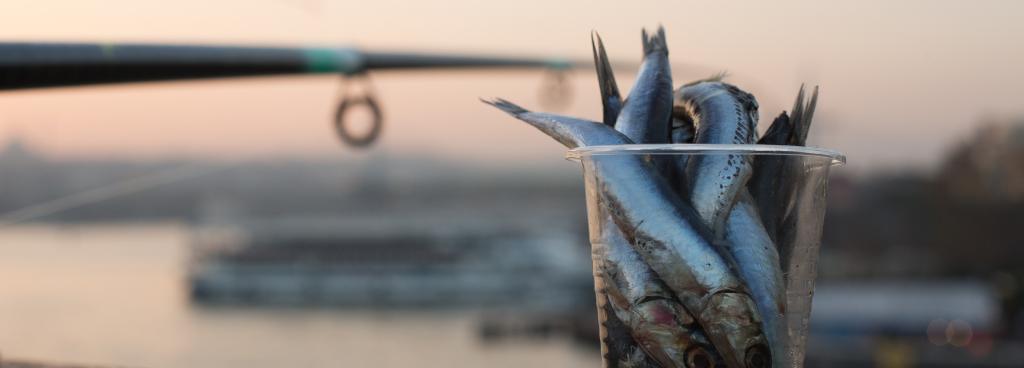Stories Worth Reeling In...
Last Updated on September 28, 2023
Today, we’re about to embark on an exciting journey into the world of fishing, one where your kitchen holds the keys to some of the most effective baits you can imagine. We’re diving deep into the art of using food as bait, and the possibilities are as vast as the open waters themselves.
So, whether you’re a seasoned angler looking to expand your repertoire or a beginner eager to discover a whole new dimension of fishing, you’re in the right place. Grab your tackle box and prepare to be amazed by what your kitchen can bring to your next fishing adventure. Welcome to the world of food-based fishing baits!
Table of Contents
Food-based baits offer a unique set of advantages that make them a valuable addition to your fishing arsenal:
Types of Food Baits
The world of food-based fishing baits is diverse, offering an array of options to suit various angling scenarios. Here are some common types:

Using naturally occurring creatures as bait taps into something primal in both anglers and fish. It’s a practice as old as fishing itself, and it’s easy to see why it endures. Here’s a closer look at the allure of natural food baits:
1. Worms: The universal bait. Whether it’s the familiar earthworm or its aquatic cousins like bloodworms or waxworms, worms are a top pick for many anglers.
2. Insects: From crickets and grasshoppers to caterpillars and ants, insects are a varied and enticing choice. They mimic the movements of terrestrial prey that fish often encounter, making them effective in various fishing scenarios.
3. Grubs: The larvae of beetles and other insects, grubs provide a meaty morsel that many species can’t resist. Their creamy texture and scent make them a go-to choice for anglers targeting panfish, bass, and more.
Artificial food baits come in a dazzling array of choices, each with its unique appeal:
1. Dough Baits: These soft, malleable baits can be molded onto hooks to imitate various types of food. They’re especially favored for targeting catfish, carp, and trout.
2. Soft Plastics: Soft plastic baits like worms, grubs, and creature baits are incredibly lifelike. They move convincingly in the water and are highly effective for species like bass and panfish. Soft plastics come in an assortment of colors and sizes to suit different conditions.
3. Scented Lures: Scented lures, often impregnated with fish-attracting scents, add another layer of enticement. These baits appeal to a fish’s sense of smell, making them particularly effective in murky waters or when fish are less active.
Choosing the right artificial food bait involves considering several factors:
Species: Different species have different preferences. Research what works best for your target fish.
Water Conditions: Water clarity, depth, and temperature all influence bait choice. Brightly colored baits might excel in clear waters, while scented lures can attract fish in murkier conditions.
Presentation: Experiment with different techniques like slow retrieves, pauses, and erratic movements to see what triggers strikes.
The process combines creativity with angling expertise, often resulting in baits that can be just as effective as store-bought varieties. Creating your own fishing bait offers several advantages:
1. Cost-Effective: Homemade baits are often more budget-friendly than their commercial counterparts. You can often whip up effective bait using items already in your kitchen.
2. Customization: You have complete control over the ingredients and scents used, allowing you to tailor your bait to your target species and local conditions.
3. Creativity: Crafting your own bait allows you to experiment with different recipes, scents, and colors, unleashing your inner angling artist.
Here are a few simple and effective homemade bait recipes to get you started:
1. Bread Dough Bait: A timeless classic for carp and catfish. Mix white bread with garlic powder and corn syrup to create a doughy concoction that fish find irresistible.
2. Cheese Baits: Cheese baits are excellent for catfish. Mix processed cheese with garlic, chicken livers, and secret ingredients like hot sauce for a punch of flavor.
3. Worms in Jello: Infuse real worms with fruity or savory gelatin mixes to create a visually appealing and scented bait for panfish and trout.
4. Oatmeal Bait: A favorite for carp and catfish. Mix oatmeal with corn syrup and add food coloring or scents for extra appeal.
5. Soap Bait: Surprisingly, some soaps can be used as effective fish attractants. Soak a plain bar soap in water, then use it as bait. It can be particularly enticing to catfish.

Let’s dive into the fascinating world of fish attraction to food baits.
Scent, Texture, and Taste: The Perfect Trio
Fish have incredibly sensitive senses, which they use to detect prey in their underwater world. Food baits appeal to these senses in several ways:
1. Scent: Fish rely heavily on their sense of smell. They can detect tiny molecules in the water, including those released by your bait. Many food baits, such as worms, insects, and cheese, emit scents that mimic the smell of natural prey. This triggers a fish’s predatory instincts, making them more likely to strike.
2. Texture: The texture of your bait can be just as important as its scent. Fish use their sensitive mouths and lips to explore potential food items. Baits that feel natural in their mouths are more likely to fool them into taking a bite.
3. Taste: Just like humans, fish have taste buds. While their taste perception isn’t as advanced as ours, they can still differentiate between different flavors. This is why bait recipes often include scents or ingredients with appealing tastes to fish, such as garlic or anise.
In this section, I’ll be your culinary guide, helping you select the perfect food baits for some of the most popular catches in the angling world.
1. Bass: The Ambitious Predators
Preferred Food Baits: Bass are known for their voracious appetites and willingness to strike at various baits. Try using plastic worms, swimbaits, or creature baits in natural colors for bass fishing success.
Expert Tip: Experiment with bait size and retrieve speed to find the combination that bass find irresistible. Sometimes, a slow, subtle presentation is more effective than a fast one.
2. Trout: The Discerning Diners
Preferred Food Baits: Trout are known for their pickiness. Natural baits like worms, nightcrawlers, and salmon eggs are top choices for trout fishing.
Expert Tip: When fishing for trout, match the hatch. This means using baits that mimic the insects or aquatic life present in the waters where you’re fishing.
3. Catfish: The Bottom Feeders
Preferred Food Baits: Catfish are bottom feeders with a keen sense of smell. They’re drawn to strong-smelling baits such as stink baits, chicken liver, and cut bait (pieces of fish like shad or bluegill). Dough baits with added scents are also effective for catfish.
Expert Tip: Use bait holders or treble hooks to keep soft baits like chicken liver secured to your hook. This prevents them from easily coming off during casting and retrieval.
4. Panfish: The Bite-Sized Delights
Preferred Food Baits: Panfish like bluegill, crappie, and perch are typically smaller species. They enjoy baits like live worms, mealworms, crickets, and small jigs or soft plastics.
Expert Tip: Use light tackle when targeting panfish, as their mouths are relatively small. A sensitive rod and line can help you detect their subtle bites.
5. Carp: The Bottom-Feeding Giants
Preferred Food Baits: Carp are big, strong fish with a penchant for bottom-feeding. Baits like corn kernels, bread dough, and boilies (specially formulated carp baits) are favorites among carp anglers.
Expert Tip: Carp has a knack for detecting resistance. Use a bait runner or free-spool reel to allow them to take the bait without feeling the pull of the line.
6. Panfish: The Bite-Sized Delights
Preferred Food Baits: Panfish like bluegill, crappie, and perch are typically smaller species. They enjoy baits like live worms, mealworms, crickets, and small jigs or soft plastics. Offer them bite-sized treats for the best results.
Expert Tip: Use light tackle when targeting panfish, as their mouths are relatively small. A sensitive rod and line can help you detect their subtle bites.
7. Carp: The Bottom-Feeding Giants
Preferred Food Baits: Carp are big, strong fish with a penchant for bottom-feeding. Baits like corn kernels, bread dough, and boilies (specially formulated carp baits) are favorites among carp anglers.
Expert Tip: Carp has a knack for detecting resistance. Use a bait runner or free-spool reel to allow them to take the bait without feeling the pull of the line.
8. Crappie: The Aggressive Feeders
Preferred Food Baits: Crappies are often more aggressive in their feeding habits. They are attracted to small jigs, live minnows, and soft plastics that mimic insects or small baitfish.
Expert Tip: Adjust your bait’s depth accordingly, and consider using a depth finder to locate schools.
While many foods can work as bait, it’s best to use those that naturally attract fish. Live or cut baits like worms, insects, and minnows are often favored.
Using expired or spoiled food as bait is not recommended. Fresh, natural baits are more likely to attract fish.
Species like catfish, carp, panfish, and trout are often attracted to food baits. However, it varies by location and fish preferences.
Using barbless hooks can make it easier to release fish, but it’s not mandatory when using food baits.
Homemade baits can be highly effective because they often mimic local prey species. Experiment with recipes to find what works best in your area.
Now, as you prepare for your next fishing trip, remember that this article is your recipe book of angling delights. Don’t hesitate to experiment, mix things up, and unleash your inner angling chef. The fish are waiting, and they can’t resist the tempting aromas of your culinary creations.
So, go ahead, grab your rod, reel, and your newfound knowledge of food baits. Explore the endless possibilities, savor the anticipation, and immerse yourself in the world of fishing with flavors that fish simply can’t resist.
Tight lines and happy fishing!